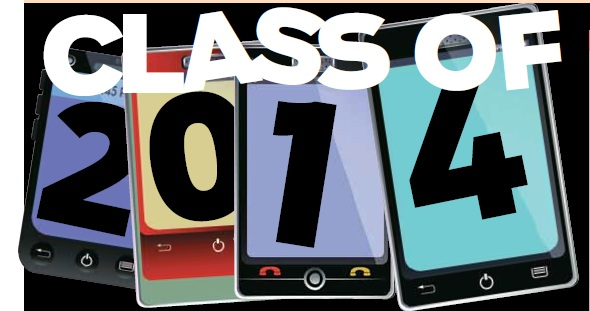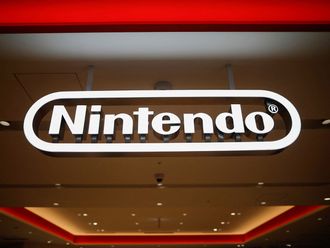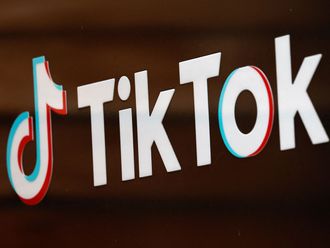
Wearable Technology
Many tech journalists have already christened 2014 as the year of wearable technology. If you have already been amazed by the Samsung Galaxy Gear (below) and Sony SmartWatch, bear in mind that these are still first-generation technology and the sky’s the limit from here. The next year will be an interesting period in this category as manufacturers will be working overtime in order to offer the consumer features that they would not already have in their smartphones.
So if you have not embraced it or prepared for it yet, it’s best you get started since this market has already been valued at over $1.5 billion (Dh5.5 billion) by next year growing to $19 billion by 2018, according to Juniper Research.
Storage
Quoting Google CEO Eric Schmidt, Abdel Wahed Bendaoua, Head of Enterprise, Emerging Markets Europe, Middle East and Africa for Google, at a recent conference in Dubai said, “Every second day now we create as much data and information as we did from the dawn of humanity until 2003.”
From palm-sized portable hard disk drives that stored a few MP3s and movies to a centrepiece of our home entertainment systems, storage drives have grown up and matured gracefully.
Western Digital, for example, has recently introduced My Cloud, which organises, centralises and secures content from users’ devices, giving access to their files from any device, anywhere in the world.
Research firm Gartner estimates the average household will own approximately 3.3 terabytes of digital content by 2016.
Cameras
Point-and-shoot cameras are dying a slow death. No matter how big Dockers makes its trouser pockets, there just isn’t enough space to carry around a point-and-shoot and a smartphone when the majority of your attempts at photography are captured through your phone.
Nikon predicts that the compact digital camera market will continue to shrink in the fiscal year ending March 2014. However, it anticipates that the market for interchangeable lens-type digital cameras will continue to grow.
Since smart is the way forward, every single product category cannot wait to throw a bucketful of wireless capabilities into their gadgets. Wi-Fi and 3G-enabled cameras have already made an impact in the market this year and rest assured that these are here to stay.
Phablets
The Samsung Galaxy Note started the trend back in the last quarter of 2011 and has proven that there is indeed a market for these larger-than-your-face devices. After that, manufacturers released machines such as the Huawei Ascend Mate, the Lenovo K900, the Samsung Galaxy Mega, the Asus Phonepad, the Sony Xperia Z Ultra, the Nokia Lumia 1520 (below), two more Notes and the HTC One Max.
Earlier this year the senior vice president of global design for Dockers told Foxnews.com that the company has increased the size of pockets in its trousers to accommodate larger phones.
The typical screen size for one of these larger-than-life devices ranges from five to seven inches.
The next year might not be very big for phablets, but it will be pivotal for the future success of this category. However, if the rumours are true and Apple does release an iPhablet, make sure you buy those new Dockers.
Tablets
The tablet segment is somewhat bittersweet. Technology constantly evolves and most of the time needs to eliminate its predecessors in order to do so. Technology Research firm Gartner’s predictions indicate that tablet shipments are projected to hit 53.4 per cent in 2014 and by doing so, PCs will be forced to take the fall — expected to drop 11.2 per cent from last year.
With Samsung targeting 100 million tablet shipments for 2014 and IHS iSuppli predicting a doubling in shipments of Apple’s Retina-display iPad mini in the first quarter, to 4.5 million devices, next year may be critical in the tablets-versus-PC saga.
While Christmas has traditionally seen good tablet sales, people are increasingly using them as tools for doing their online shopping as well, with a BusinessInsider report predicting the devices will be used for more than half of US e-commerce spend this year. Black Friday, the day after Thanksgiving in the US that traditionally sees big sales promotions, saw iPads (below) account for 88 per cent of online shopping, according to a report by tech giants IBM.
Smartphones
Samsung and Apple have owned the smartphone segment this year with Lenovo, LG and Huawei many paces behind. Despite Samsung selling almost triple the number of smartphones as Apple in the third quarter of this year, according to tech researchers Gartner, there is a strong chance that next year will be a free-for-all with LG and Lenovo also diving in.
The iPhone 6 will be a bigger phone that will hopefully incorporate NFC into its connectivity offerings. Sony will make a fair amount of noise too. With its expertise in sound, display and imaging evident in the Xperia Z1, the future of Sony in this segment is tipped to be positive.
Forcing their way into the party are HTC and Motorola. The HTC One (below) range has proven to be a huge success catering to the gap in the market between Samsung and Apple fans, converting many along the way as well. Fingerprint security has already become a big part of the smartphone world. With Apple and HTC joining the cause, next year might see more manufacturers incorporate it into their devices while developers explore new ways to use the feature in their applications.










